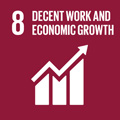- Docente: Francesco Maria Spampinato
- Credits: 6
- Language: Italian
- Teaching Mode: Traditional lectures
- Campus: Bologna
- Corso: First cycle degree programme (L) in Drama, Art and Music Studies (cod. 5821)
-
from Nov 11, 2024 to Dec 18, 2024
Learning outcomes
By the end of the laboratory the student: knows how to analyze and deal with different applications of the languages of contemporary art, in its specific field and interdisciplinary relations; knows how to recognize the role played by visual studies in the overall development of artistic research and their contribution to the processes of the cultural industry.
Course contents
While in the institutional part of the course, the distinctive features of contemporary art have been identified and discussed, this part will examine some aspects, practices, and phenomena that challenge the very concept of art. The themes and case studies addressed question, and at the same time expand, the idea of the work of art and what is or is thought to be the artist’s role. The topics addressed will be particularly relatable to the hybridizations between contemporary art and other forms of artistic expression, as well as with media, technology, and political issues.
If the institutional part of the course aims to answer the question “what is contemporary art?,” this laboratory wants to highlight “what contemporary art is not,” or at least what is not commonly recognized as contemporary art. Thanks to the tools developed within younger and more experimental disciplines than art history such as cultural studies, media studies, and visual studies, we will notice how most of the practices and forms of artistic expression of the last decades, and increasingly in this 21st century, require new criteria of analysis and new ways of seeing.
As for the institutional part, the course consists of 30 hours in total and is divided into 15 lectures of 2 hours each, articulated into 5 units dedicated to exploring some specific areas: art as a tool for political discussion; the relations between visual arts and moving images, i.e., cinema and video; the encounter between art and pop music; creative industries as a field of experimentation and research; and finally media hybridizations in the light of issues related to the profusion of technologies and the saturation of images, a distinctive element of our visual culture.
Schedule
I. POLITICAL ART
1. Institutional Critique
2. Subcultures and countercultures
3. Political Art
II. CINEMA AND VIDEO
4. Experimental and underground cinema
5. Video art
6. Cinema as an object and the artist as film director
III. ART AND POP MUSIC
7. The Visual identity of pop music
8. The art of the videoclip
9. Artist as musician and producer
IV. THE CREATIVE INDUSTRIES
10. Architecture and design
11. Art vs. TV
12. Forms of dissemination
V. TECHNOLOGY AND VISUAL CULTURE
13. Art and Technology
14. Hybridizations and immersions
15. Visual culture
Readings/Bibliography
The bibliography, valid for both attending students and non-attendees, consists of a selection of texts that can be downloaded in PDF format as teaching material from the "virtual" page of the course. The selection includes essays, articles, and texts of different nature written by philosophers, art historians, critics, curators, and artists. The selected readings will be arranged in sequence to correspond with the various lectures in the course. The student is invited to read the material before the corresponding lecture. The texts in question will be discussed in the exam.
Teaching methods
Teaching will be carried out in "traditional" teaching mode, that is, through face-to-face lectures. The course, of 30 hours in total, is subdivided into 15 lessons of 2 hours each, which are articulated into 5 units dedicated to exploring specific areas of contemporary art.
Assessment methods
At the end of the course, the student will be required to take an oral examination, intended as part of the examination on the institutional module of the course. Exams will be conducted individually and structured around a series of random questions about the readings, case studies considered, and topics discussed. For this portion of the exam, the student will also be required to submit a visual essay, a 8-10 slide PowerPoint presentation illustrating an idea or theme, based on suggestions received during the course.
It is not allowed to focus on an artist or a work of art, but on contemporary phenomena and problems related to issues such as, for example, identity, the body, technology, communication, sustainability, ecology, politics, virtuality, the dream, the future, and history. The presentation should be based on a sequence of images chosen by the student, original and/or appropriated from different sources, left intact and/or manipulated. The images can be accompanied and/or alternated with texts that help to understand better the idea presented.
A fundamental element is also the assignment of a title to this visual essay, a title to be reported on the first slide and that encapsulates, in a few words, both the idea or the theme of the essay and the approach and the message that is intended to be communicated. The file must be uploaded in time for the day of the exam on the "virtual" page of the course, following the link provided by the teacher during the lessons.
Students with SLD or temporary or permanent disabilities. It is necessary to contact the relevant University office (https://site.unibo.it/studenti-con-disabilita-e-dsa/en) with ample time in advance: the office will propose some adjustments, which must in any case be submitted 15 days in advance to the lecturer, who will assess the appropriateness of these in relation to the teaching objectives.
Teaching tools
Case studies are documented through the projection of audio-visual materials. Presentations used by the instructor will be made available to students through the "virtual" platform at the end of each week.
Office hours
See the website of Francesco Maria Spampinato
SDGs




This teaching activity contributes to the achievement of the Sustainable Development Goals of the UN 2030 Agenda.
